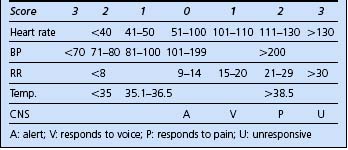CHAPTER 1 ORGANIZATIONAL ISSUES
DEFINITIONS
Traditional definitions of ICUs and high dependency units (HDUs) attempt to separate the functions of each.
LEVELS OF CARE
Critically ill patients can be classified according to the level of medical and nursing care required (see Intensive Care Society 2002 Levels of Critical Care for Adult Patients www.ics.ac.uk/icmprof/downloads/icsstandards-levelsofca.pdf) (Table 1.1).
TABLE 1.1 Levels of critical care
| Level 0 | Patients whose needs can be met by ward-based care in an acute hospital. |
| Level 1 | Patients at risk of their condition deteriorating (including those recently moved from higher levels of care) whose needs can be met on a normal ward with additional advice or support from the critical care team. |
| Level 2 | Patients requiring more advanced levels of observation or intervention than can be provided on a normal ward, including support for a single failing organ system. |
| Level 3 | Patients requiring advanced respiratory support alone or basic respiratory support together with support for at least two organ systems. |
Specialist care is recorded by attaching one of the following letters as a suffix.
N – neurosurgical, C – cardiac, T – thoracic, B – burns, S – spinal injury, R – renal, L – liver, A – other specialist care.
Patients should be nursed in an area capable of providing the appropriate level of care. While level 2 care may be provided in an HDU or ICU, true level 3 care can only be provided in a suitably equipped ICU. In reality, these levels of care are not discrete entities, but represent points on a continuum or spectrum. As their condition changes, patients may need a greater or lesser level of care, and frequently move between the defined levels.
IDENTIFICATION OF PATIENTS AT RISK
A number of scoring systems have been developed to help staff detect those patients who are at risk. These are based on the principle that patients develop abnormal physiological parameters as their condition starts to deteriorate. The scoring system can be used by any member of the ward medical or nursing staff and if appropriate, the intensive care outreach team can be called (see below). An example of a typical early warning scoring system is shown in Table 1.2. The response triggered by the scoring system is shown in Table 1.3.
TABLE 1.3 Typical response to early warning scoring system
| Ward area | Score > 3 | Call outreach team |
| High dependency area | Score > 3 Score > 5 | Call responsible medical staff Call outreach team / ICU |
| Any area | Score > 10 | Call outreach Team / ICU |
















